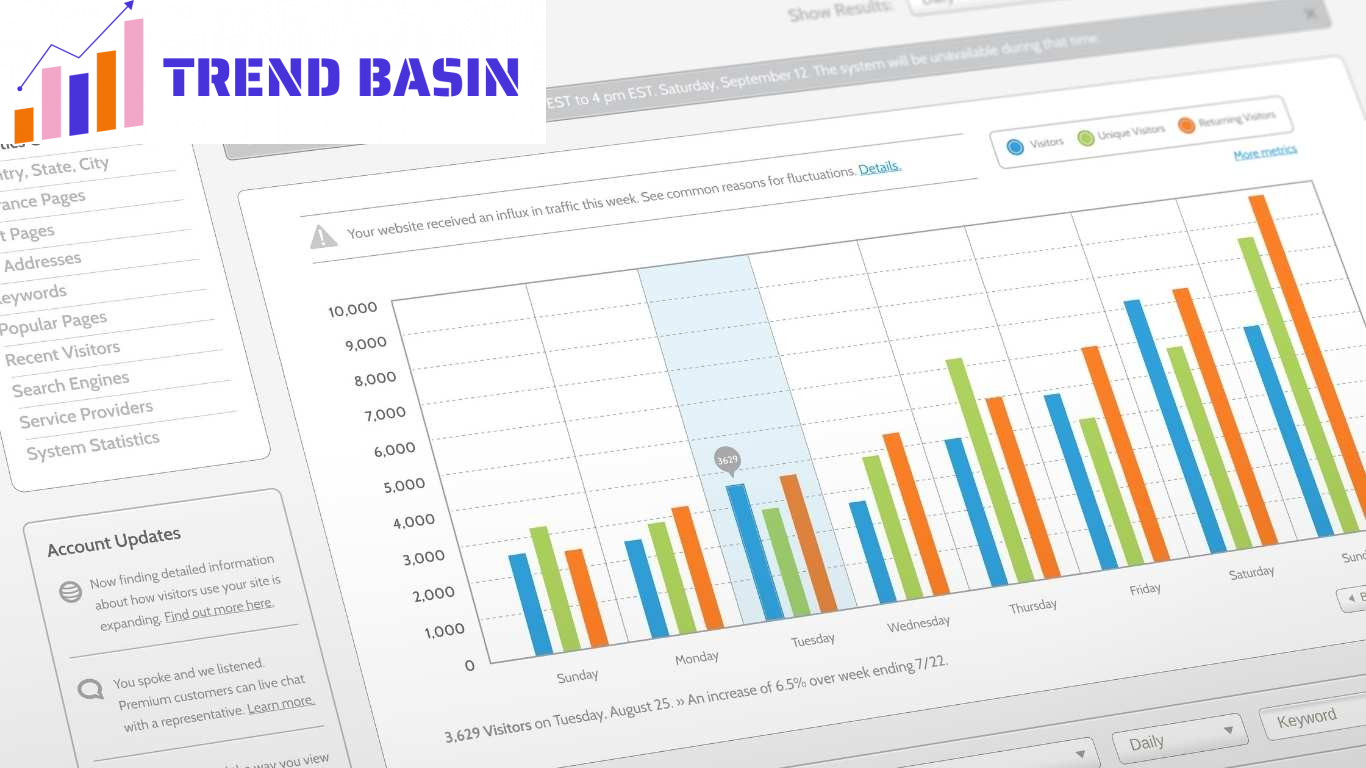
How to Use A/B Testing for Website Elements
One effective way to achieve this is through A/B testing.
A/B testing, also known as split testing, allows you to compare two versions of a web page or specific elements to determine which performs better.
At Trend Basin, we understand the importance of data-driven decisions in web design.
In this article, we will explore the fundamentals of A/B testing, how to implement it effectively, and share valuable insights and tips to help you optimize your website elements.
Key takeaways
- A/B testing is a powerful tool for improving user experience and conversion rates.
- Start with a clear hypothesis and define measurable goals for each test.
- Use reliable A/B testing tools to ensure accurate results.
- Analyze data thoroughly to make informed decisions.
- Regularly test and iterate to continuously improve website performance.
Table of Contents
ToggleUnderstanding A/B Testing
A/B testing involves comparing two variations of a web page or element to determine which one yields better results.
The process includes the following steps:
- Identify the element to test: Choose a specific element on your website that you want to optimize.
- Create variations: Develop two versions of the element (A and B) with slight differences.
- Define goals: Establish clear objectives for the test, such as increasing click-through rates or reducing bounce rates.
- Run the test: Split your audience and direct a portion to each version, collecting data on user behavior.
- Analyze results: Evaluate the data to determine which version performed better, making informed decisions based on the findings.
Elements to A/B Test
Many website elements can benefit from A/B testing. Here are some key components to consider:
1. Call-to-Action (CTA) Buttons
CTA buttons are crucial for driving user actions, such as signing up for a newsletter or making a purchase.
Test variations could include:
- Different button colors
- Text variations (e.g., “Buy Now” vs. “Shop Now”)
- Button sizes or placements on the page
Case Study: A software company tested a video on their landing page against a static image.
The version with the video resulted in a 25% increase in sign-ups, demonstrating the power of dynamic content.
2. Headlines and Copy
The headline is often the first thing users see, making it vital for capturing attention.
Test variations could include:
- Different headlines
- Length of copy
- Tone (formal vs. informal)
Tip: Use A/B testing to determine which headlines resonate most with your audience.
3. Images and Visuals
Visual elements significantly influence user engagement and conversions.
Test variations could include:
- Different product images
- Image placements
- Video vs. static images
Case Study: An e-commerce site tested two CTA button colors: green and red.
They found that the green button led to a 15% higher conversion rate, leading to increased sales.
4. Layout and Design
The overall layout of a web page can impact user experience.
Test variations could include:
- Different column layouts
- Navigation placements
- Overall page design elements
5. Forms and Input Fields
Optimizing forms can lead to higher completion rates.
Test variations could include:
- Different field arrangements
- Number of fields (e.g., multi-step vs. single-step)
- Text for the submit button
Tip: Simplifying forms often leads to increased conversion rates.
Implementing A/B Testing
To effectively implement A/B testing, follow these steps:
1. Define Your Hypothesis
Before starting a test, clearly define what you want to achieve and why.
Your hypothesis should articulate your expectations and the rationale behind the changes you are testing.
2. Choose the Right A/B Testing Tool
Using the right tools ensures accurate tracking and analysis of your tests.
Some popular A/B testing tools include:
- Optimizely: A robust platform that allows for easy implementation of A/B tests and multivariate testing.
- Google Optimize: A free tool that integrates with Google Analytics, providing insights into user behavior.
- VWO (Visual Website Optimizer): Offers a user-friendly interface for running A/B tests and analyzing results.
3. Segment Your Audience
Ensure that your audience is appropriately segmented for the test.
This helps maintain a consistent experience and minimizes bias.
4. Monitor and Analyze Results
After running your A/B test for a sufficient amount of time, analyze the results to determine which version performed better.
- Look at key metrics, such as conversion rates, bounce rates, and user engagement.
5. Make Informed Decisions
Based on the analysis, decide whether to implement the winning version, test further variations, or explore new hypotheses.
Case Study: A SaaS company ran multiple A/B tests on their landing page.
By continuously optimizing based on data, they increased their overall conversion rate by 40% within six months.
Best Practices for A/B Testing
To maximize the effectiveness of your A/B tests, keep these best practices in mind:
1. Test One Element at a Time
Testing multiple elements simultaneously can lead to confusing results.
Focus on one change at a time for clearer insights into performance.
2. Allow Sufficient Time for Testing
Running tests for too short a period can yield inaccurate results.
Aim to run tests long enough to gather meaningful data, considering traffic levels and seasonal trends.
3. Use Statistically Significant Data
Ensure your results are statistically significant before drawing conclusions.
A common guideline is to aim for at least a 95% confidence level in your results.
4. Document Your Findings
Keep a record of your A/B tests, including hypotheses, variations, results, and insights gained.
This documentation can guide future tests and help build a comprehensive understanding of your audience.
5. Continuously Iterate
A/B testing is not a one-time process.
Continuously test different elements on your site to adapt to changing user preferences and behaviors.
By maintaining an iterative approach, you can stay ahead of trends and improve user experience over time.
Real-World Example of A/B Testing in Action
Case Study: Online Retailer
An online retailer wanted to improve its checkout process.
They hypothesized that simplifying the checkout form would reduce cart abandonment rates.
The original form included multiple fields, including unnecessary information.
They created a simplified version that only required essential information.
A/B Test Implementation
- Version A (Original): Required full address, phone number, and optional newsletter sign-up.
- Version B (Simplified): Required only email, name, and shipping address.
Results
After running the A/B test for three weeks:
- Version B saw a 30% reduction in cart abandonment rates.
- Overall conversions increased by 20%.
This case study demonstrates the power of simplifying user interactions.
It highlights how A/B testing can lead to significant improvements in key performance indicators.
Conclusion
A/B testing is an invaluable tool for optimizing website elements and improving user experience.
By systematically testing variations and analyzing results, you can make data-driven decisions that lead to higher conversion rates and better overall performance.
At Trend Basin, we encourage you to incorporate A/B testing into your web design strategy to ensure ongoing improvements.
For more insights and tips on enhancing your digital presence, connect with us on LinkedIn and Facebook.


